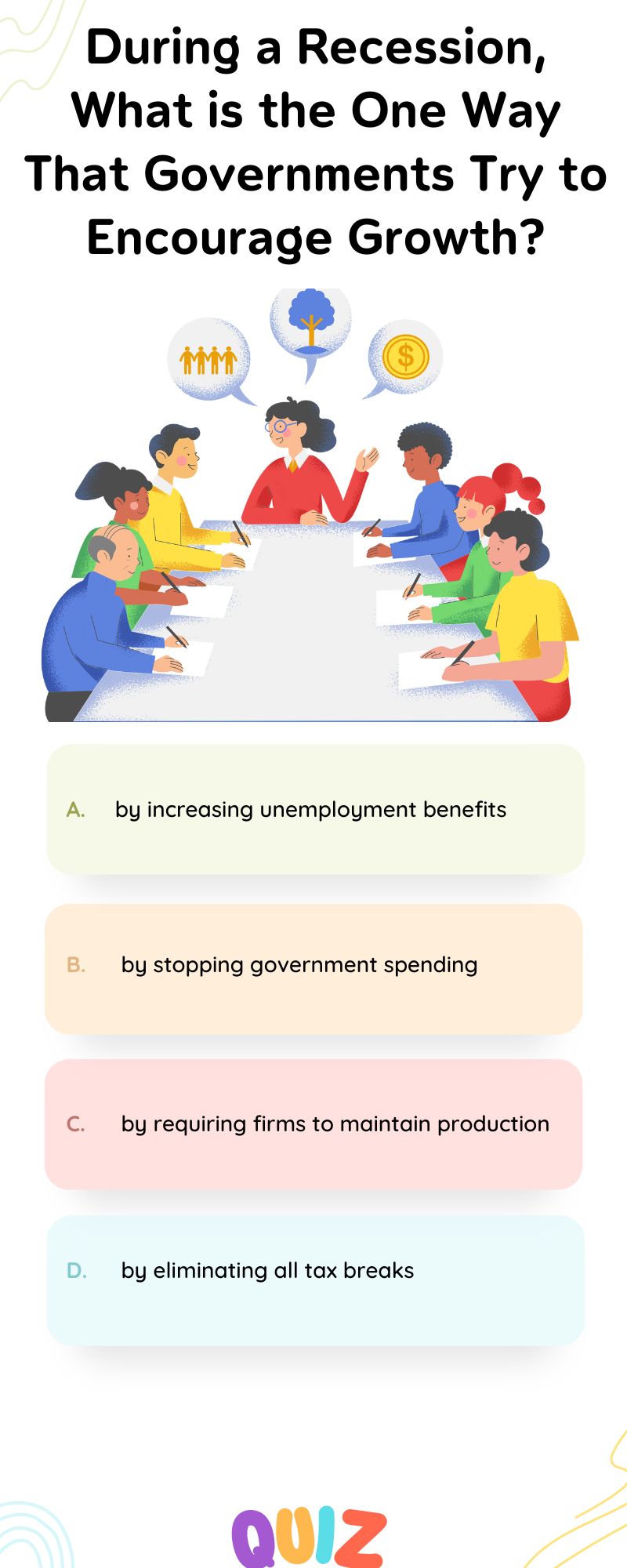During a Recession, What is the One Way That Governments Try to Encourage Growth?
- by increasing unemployment benefits
- by stopping government spending
- by requiring firms to maintain production
- by eliminating all tax breaks
In times of economic hardship, the strategies governments employ to stimulate growth can significantly impact both the length and severity of a recession. Among these strategies, increasing unemployment benefits stands as a beacon of hope for many, offering a direct way to boost economic activity by putting money back into the hands of those who need it most. This approach, while straightforward, opens up a dialogue about the best paths to economic recovery and the roles different policies play in this complex process. Through clear explanation and creative insights, we’ll unravel why this method is often chosen over others, such as cutting government spending, mandating production levels, or eliminating tax incentives.

Answer: by increasing unemployment benefits
The Power of Unemployment Benefits in Stimulating Economic Growth
Increasing unemployment benefits during a recession does more than just provide financial support to those out of work; it injects vitality into the economy at a crucial time. Imagine this: every dollar given in unemployment benefits creates a ripple effect, boosting demand for goods and services and encouraging businesses to keep their doors open and staff employed. It’s a simple yet effective concept—when people have more money to spend, the economy starts to move again, creating a positive cycle of growth and employment.
A Comparative Look at Other Government Strategies
While increasing unemployment benefits is a favored approach, it’s not the only tool in the government’s toolkit. Other strategies come with their own sets of challenges and benefits. For instance, cutting back on government spending during a recession might seem like a way to save money, but it often leads to a deeper economic slump. Similarly, forcing companies to maintain production levels can lead to an unsustainable buildup of inventory, further straining businesses. And while eliminating tax breaks could increase government revenue in the short term, it might also discourage spending and investment, hindering recovery efforts.
Why Unemployment Benefits Shine as a Strategy
What sets increasing unemployment benefits apart is its direct impact on the economy. By supporting those who are most affected by a recession, this approach not only aids individual households but also stimulates demand across the economy. It’s a strategy that acknowledges the human element of economic recovery, understanding that behind every statistic is a person trying to make ends meet.
Crafting a Path Forward
As we consider the future, it’s clear that strategies like increasing unemployment benefits are crucial in not just weathering economic storms but emerging stronger from them. It’s about creating a foundation for growth that is inclusive and resilient, ensuring that recovery benefits all members of society. In navigating the challenges of economic downturns, the choices we make today will shape the prosperity of tomorrow, highlighting the importance of thoughtful, effective policymaking in steering the course toward recovery and beyond.

